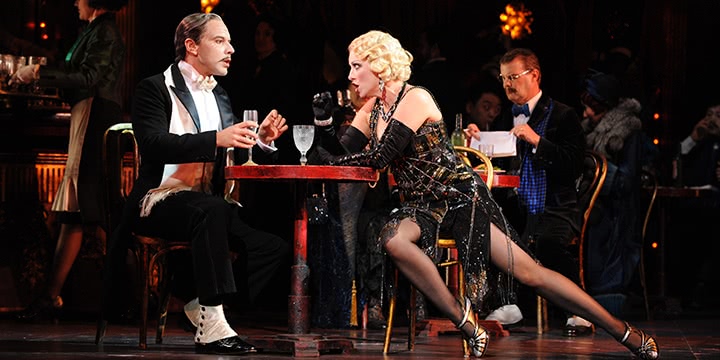La Bohème, the opulent story of a tragic love affair that inspired the likes of Baz Luhrmann’sMoulin Rouge!, has returned to the Opera House as sumptuous as ever.
First premiering under director Gale Edwards’ stewardship back in 2011, Puccini’s perennial favourite has been a stalwart of Opera Australia ever since and shows no signs of retiring. Set in the fading days of the Weimar Republic – where decadence and debauchery were on full display – it is likely one of the most moving and entertaining operas you will see this year. Principal artist Julie Lea Goodwin walks us through a day in the life.
“This production has been around for about five years, and I think it’s become a permanent part of the repertory,” Goodwin says. “It’s here to stay, and I think that’s because it’s so glamorous. I got a bit of a shock, actually, when I saw the costumes up close. When I was understudy I was basically watching my character the entire time, so this time, I saw dog leashes around people’s necks, and a lot of bare skin, people on stilts, some really weird and wonderful things. I think it looks phenomenal when it’s all put together.”
Having graduated from an understudy, it is a testament to both Goodwin’s own talents as a performer, as well as the efforts Opera Australia undertakes in order to promote emerging singers, that she has developed the role with such strength. As Musetta, Goodwin finds herself as a major character, and her ‘Quando Me’n Vo’’ is one of the production’s standout arias.
“I started with Opera Australia last year, and the first role that I understudied was actually this role. So I feel like I’ve had time to theoretically digest it and come up with my own take on the character within the staging that’s provided, but there are a couple of tricky things. There’s a revolve that works on the stage, so just working out how to look really fluid while the stage is effectively moving out from underneath you,” she laughs. “I’m getting the hang of it. I came from musical theatre, so I didn’t go through the same path that a lot of other young singers would. I came in with quite a lot of performance experience, but I had a lot to figure out in terms of the world of opera. No microphones of course, speaking other languages. So it’s really wonderful to have all of the coaching every week, and watching all of these amazing other artists up close and personal. It’s a nice way to ease into it.”
While the production has inevitably changed over the years, La Bohème’s enticing, sorrowful heart has endured. As the cast and crew have rotated, new energy and perspectives have been added to the show, and Goodwin now finds herself able to instil her own interpretation to the role.
“It’s changed, no doubt, but they’ve kept it fairly close to the original. There are a handful of people still here from the first season, including the conductor. But I think it’s important as well that when you do have a new person take on a role, people are willing to adapt. And people have different strengths. In my version of Musetta, I like to think that maybe she was a showgirl once, and it makes sense that she has this singing and dancing background behind her. Her character loves a performance, to get attention, and so I like having all these little dancing moments that might pop in. Things that perhaps somebody else wouldn’t have done in the past.”
La Bohème runs until Wednesday March 23as part of Spectrum Now 2016, at Joan Sutherland Theatre, Sydney Opera House.

































